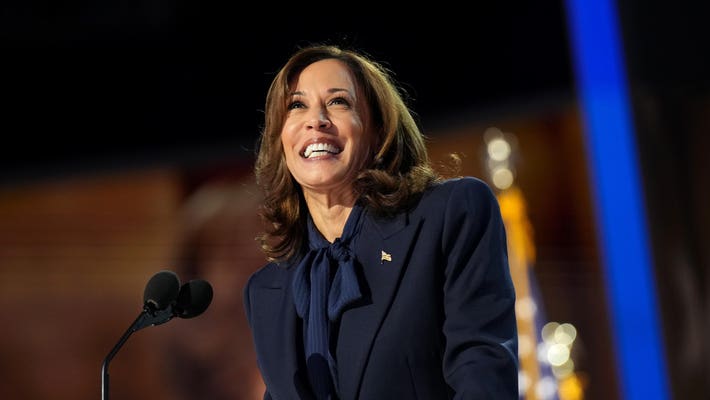
Election 2024 Swing State Polls: Trump Leads Sun Belt, Harris Holds Up North—And Pennsylvania’s A Tossup
As the U.S. heads toward one of the most contentious elections in recent history, recent polls indicate significant divides across regional lines, with Donald Trump leading in the Sun Belt and Kamala Harris gaining traction up North. But in Pennsylvania—a critical battleground that could decide the election—the race is tight, leaving analysts to wonder how each candidate will adjust their strategy to secure this decisive state.
Sun Belt: Trump’s Southern Stronghold
Trump’s continued popularity in the Sun Belt reflects both his firm hold on conservative values and the shifting demographics in states like Arizona, Texas, and Florida. The GOP’s strategy is clear: appeal to the region’s traditional base while addressing the concerns of new suburban voters who increasingly drive election outcomes. Trump has tailored his message, doubling down on immigration control, business-friendly policies, and national security—a mix that resonates strongly with both urban and rural voters across the Sun Belt.
What’s controversial? While Trump’s approach resonates, it also alienates a significant segment of younger, diverse populations moving into Sun Belt suburbs. These demographics are more progressive, and their discontent may pose a long-term challenge to Republican dominance in the South. Yet, Trump’s gamble to appeal directly to his core base over wider voter inclusivity might pay off in the short term—particularly if these states see low youth turnout.
Northern Surge: Harris Holds the Line
The Northern swing states, such as Michigan, Wisconsin, and Minnesota, are leaning towards Kamala Harris. Her messaging resonates with Rust Belt voters who are drawn to her promises on economic reform, healthcare accessibility, and union support. The economic downturn in these industrial areas has only deepened the reliance on federal support, a theme Harris is keen to amplify as she contrasts her platform with Trump’s economic policies.
However, Harris’s surge in the North comes with its own set of challenges. Many in these states are skeptical of both major parties, with independent voters feeling disenfranchised by Washington politics. The Democratic strategy here is clear: mobilize young and minority voters while also appealing to independents who feel sidelined by polarizing campaigns. But Harris’s progressive platform, including her stance on issues like climate change and gun control, may put off some moderate and conservative-leaning voters in these otherwise liberal states.
Pennsylvania: The Tossup That Could Decide It All
Pennsylvania has emerged as one of the most unpredictable swing states. The state’s voter base is diverse, with urban centers like Philadelphia leaning Democratic and rural areas solidly Republican. This leaves suburban regions, particularly around Pittsburgh and Philadelphia, as the key battlegrounds. With its 19 electoral votes, Pennsylvania is more than just a tossup—it’s the tipping point that could ultimately decide the 2024 election.
Polls indicate an even split, and both candidates are investing heavily in Pennsylvania, emphasizing local issues like fracking and infrastructure that are highly divisive. For Trump, support for fracking aligns him with the state’s natural gas industry, crucial for the local economy. Harris, however, has cautiously threaded her stance, promoting a clean energy transition while assuring no immediate threats to fracking jobs—a stance that risks alienating both environmentalists and traditional energy voters.
Key Factors Driving the Swing
1. Economic Anxiety: Economic conditions in swing states will play a crucial role. Trump is promoting his pre-pandemic economic policies, promising a resurgence of manufacturing jobs, while Harris’s campaign focuses on middle-class recovery and workers’ rights. The winner will likely be the one who can better address economic anxieties in these uncertain times.
2. Cultural Divide: The urban-rural divide is widening, with urban centers favoring Harris while rural areas align strongly with Trump. This dynamic is more pronounced in states like Pennsylvania and Michigan, where the candidates must walk a fine line between progressive and conservative values.
3. Independent Voters: Swing states are seeing a surge in independent voters, many of whom are disillusioned with both parties. How Trump and Harris engage this group will likely determine the election outcome, especially in pivotal regions like Pennsylvania’s suburbs and Michigan’s industrial towns.
4. Voter Turnout: Both parties are relying on robust voter turnout, with a particular emphasis on younger voters in the North for Harris and older, more conservative voters in the South for Trump. Should either candidate fail to mobilize their core demographics, it could spell disaster in these razor-thin races.
Controversy Looms: Is the Electoral College Fair?
While each candidate fights for dominance across swing states, a larger debate looms over the U.S. electoral system itself. The Electoral College has faced scrutiny for years, with critics arguing it overrepresents rural and swing states while underrepresenting densely populated urban areas. The 2024 election could reignite this debate if, once again, the popular vote and Electoral College outcomes diverge. Should Harris win the popular vote but lose the election through the Electoral College—as happened with Hillary Clinton in 2016—calls to abolish the system could intensify.
Final Thoughts
The 2024 election is shaping up to be one of the most polarizing in American history, with the nation split along clear regional lines. Trump’s stronghold in the Sun Belt and Harris’s lead up North reveal a deeply divided country. However, with Pennsylvania as the ultimate wildcard, both campaigns face an uphill battle in securing a path to victory. The stakes are high, and the question remains: can either candidate bridge the gap, or will America’s deep divisions define this election’s legacy?






